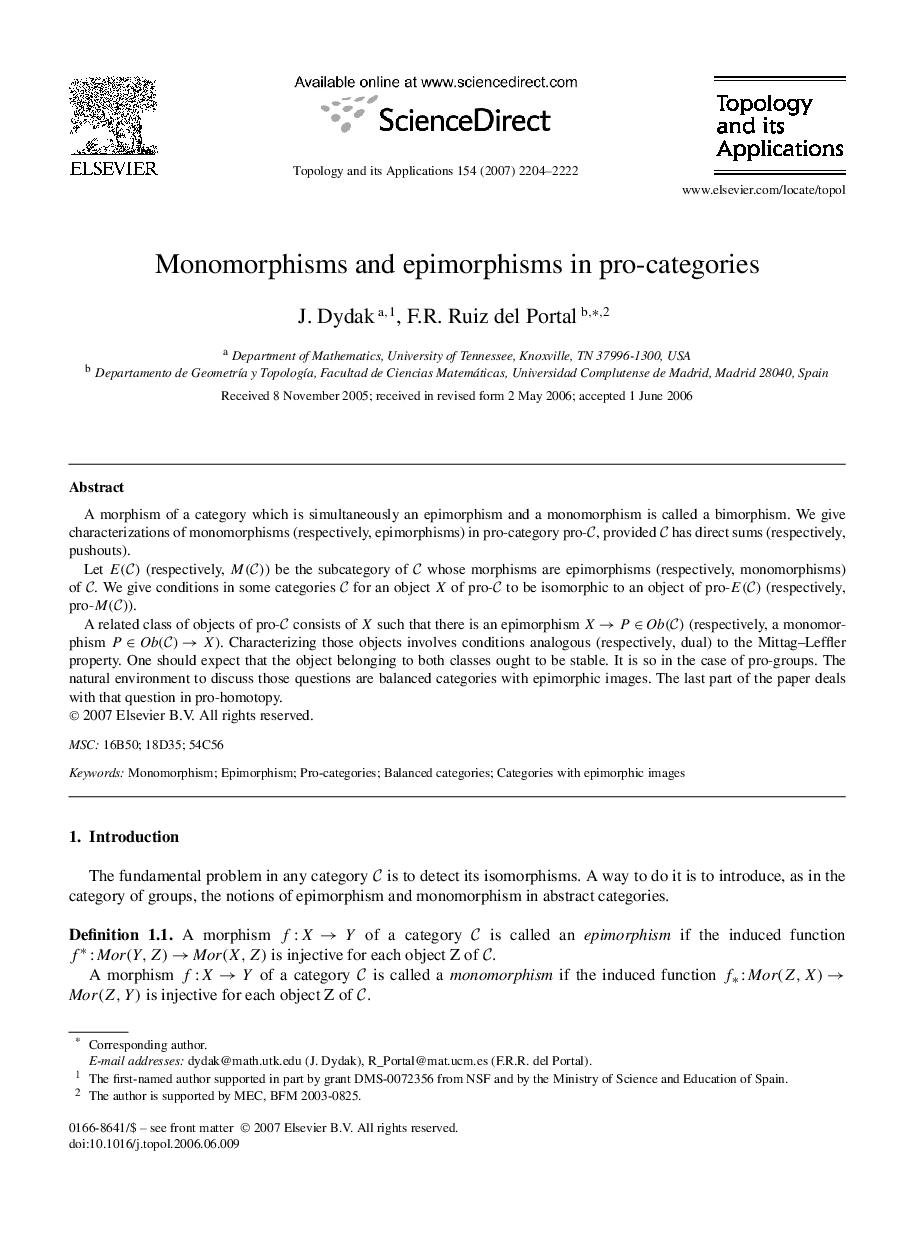| Article ID | Journal | Published Year | Pages | File Type |
|---|---|---|---|---|
| 4661242 | Topology and its Applications | 2007 | 19 Pages |
A morphism of a category which is simultaneously an epimorphism and a monomorphism is called a bimorphism. We give characterizations of monomorphisms (respectively, epimorphisms) in pro-category pro-C, provided C has direct sums (respectively, pushouts).Let E(C) (respectively, M(C)) be the subcategory of C whose morphisms are epimorphisms (respectively, monomorphisms) of C. We give conditions in some categories C for an object X of pro-C to be isomorphic to an object of pro-E(C) (respectively, pro-M(C)).A related class of objects of pro-C consists of X such that there is an epimorphism X→P∈Ob(C) (respectively, a monomorphism P∈Ob(C)→X). Characterizing those objects involves conditions analogous (respectively, dual) to the Mittag–Leffler property. One should expect that the object belonging to both classes ought to be stable. It is so in the case of pro-groups. The natural environment to discuss those questions are balanced categories with epimorphic images. The last part of the paper deals with that question in pro-homotopy.
